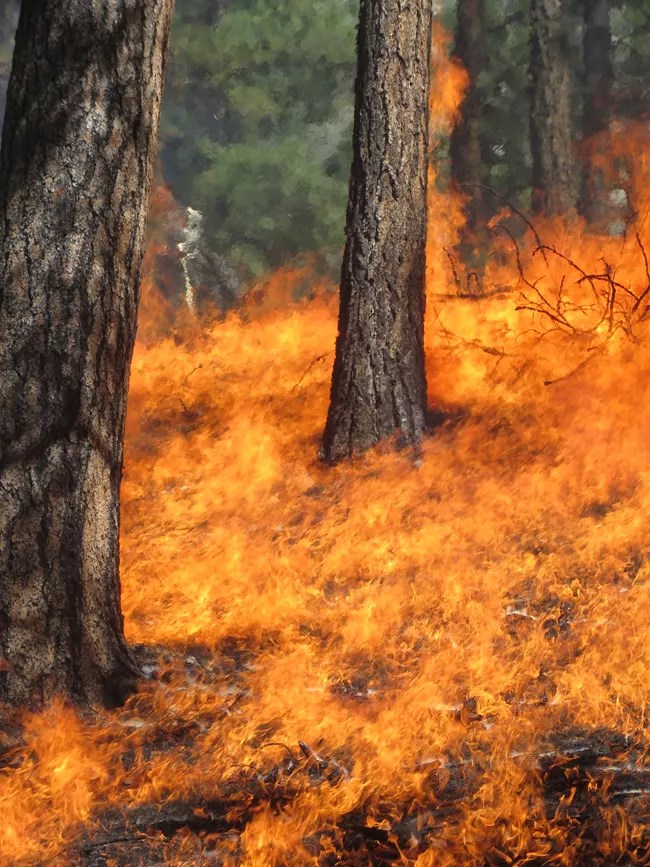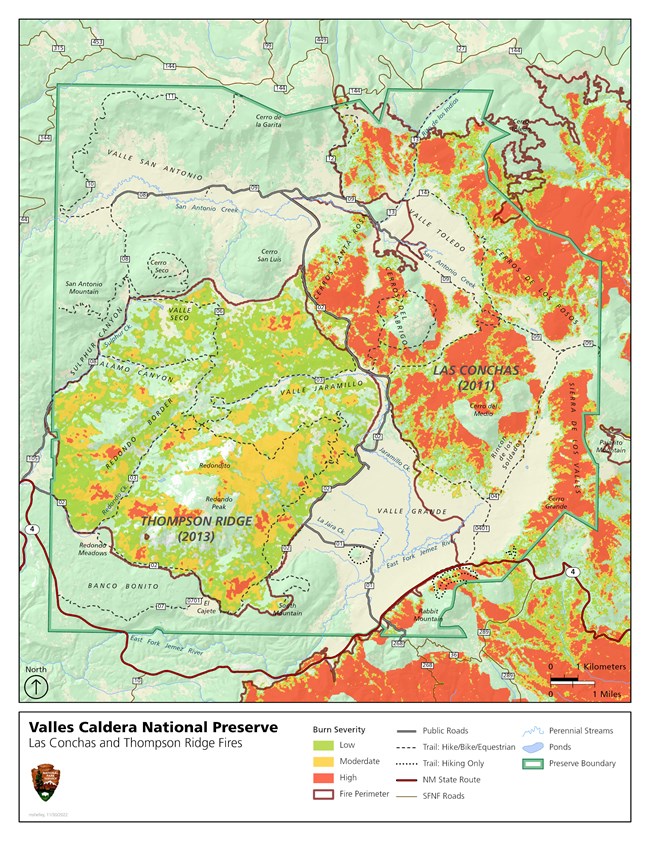
USGS For eons, fire has played an important ecological role in the Jemez Mountains of northern New Mexico. Historically, small fires occurred at regular intervals, preventing fuels like leaf litter, dead trees, and limbs from building up on the forest floor over time. For this reason, historic fires burned low to the ground and moved slowly across the landscape. These fires provided great ecosystem benefits: nutrient cycling, boosting soil fertility, stimulating new plant growth, promoting seed germination, deterring invasive species, and improving habitat for fire-adapted native species. To restore ecosystem health and reduce the risk of future wildfires, Valles Caldera National Preserve implements prescribed forest treatments (controlled burns) that are meant to mimic a natural fire interval. Fire managers work closely with natural and cultural resource specialists to monitor the effects of forest treatments on wildlife, plant communities, watersheds, archeological resources, and overall ecosystem health. 
NPS/M. Shelley Wildfires at Valles CalderaIf you have visted Valles Caldera National Preserve since 2011, you have likely noticed lasting visual impacts of previous wildfires. The Las Conchas Fire (2011) and Thompson Ridge Fire (2013) burned a combined 60% of Valles Caldera National Preserve, leaving behind prominent burn scars on the landscape. Las Conchas Fire - 2011In 2011, the Las Conchas fire burned 156,000 acres (243 square miles). In the first 14 hours it burned more than 40,000 acres; this was nearly as many acres as had burned in what previously had been the largest documented fire in the Jemez Mountains. By the time it stopped spreading, Las Conchas fire was more than three times the size of the previous largest forest fire in Jemez Mountains history (the 2000 Cerro Grande Fire). Thompson Ridge Fire - 2013Before the Jemez Mountains community had a full opportunity to grapple with the impacts of Las Conchas fire, the Thompson Ridge fire began early in the fire season at the end of May, 2013. While it was 24,000 acres in size, entirely on the Valles Caldera National Preserve, we have recently come to accept this as a fire of more “normal” size. Unlike Las Conchas, it burned with a reasonable rate of spread and expansion and resulted in a mosaic of varied fire severity. But it was unusual in that it occurred in high elevation (8,000-11,000 feet amsl) forests where normal fire return intervals are not as frequent and where the fire season usually begins later. Additional InformationRecent Fires On August 25, 2022, a lightning fire burned a single tree near the Valle Grande Trail.
On August 7, 2022, a lightning fire was reported near the junction of VC09 and VC12. The fire burned a single ponderosa pine tree. Estimated acreage: 0.1 acres The La Jara Fire was reported on the afternoon of July 21, 2022, within the Cabin District of Valles Caldera National Preserve. The fire was ignited by lightning and burned in a single live Ponderosa pine. Firefighters from the National Park Service and U.S. Forest Service were able to extinguish the fire the same evening. Estimated acreage: 3.5 acres On April 28, 2022, a new fire started on the western side of Valles Caldera National Preserve in the Freelove Canyon area. 3.5 acres burned in the old 2013 Thompson Ridge Fire footprint. Quick action by the Southern Area Red Team and local responders contained the fire. The cause of the fire is believed to be a lightning strike.
Latest information: https://inciweb.nwcg.gov/incident/8075/ On April 22, 2022, the Cerro Pelado Fire started 7 miles east of Jemez Springs. As of September 19, the Cerro Pelado Fire was considered 98% contained with crews monitoring for any signs of heat or smoke. Cerro Pelado Fire’s estimated 45,617 acreage burned by land ownership:
Related Articles |
Last updated: December 16, 2022

